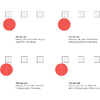Different sport, different problem and different tech - but this is an interesting point of progression in baseball.
On-field umpires will be told whether each pitch is a strike or a ball based on this Trackman Radar.
The interesting part is the speed at which the tech has improved - to the point where it is almost viable.
I would hope that cricket could get to this stage in the future.
Instantaneous Ultra-Edge and LBW DRS for every appeal - without the 5 minutes of pointless "rock and rolling"
On-field umpires will be told whether each pitch is a strike or a ball based on this Trackman Radar.
The interesting part is the speed at which the tech has improved - to the point where it is almost viable.
I would hope that cricket could get to this stage in the future.
Instantaneous Ultra-Edge and LBW DRS for every appeal - without the 5 minutes of pointless "rock and rolling"







